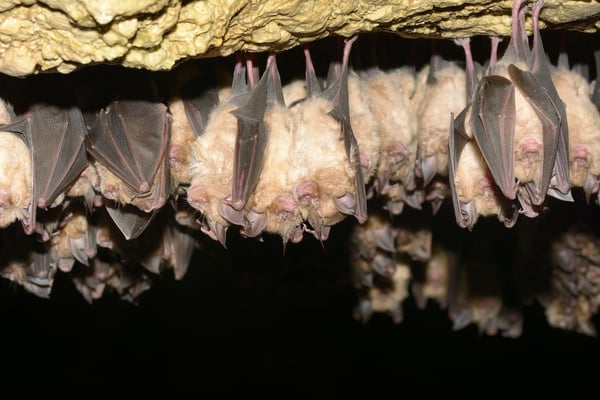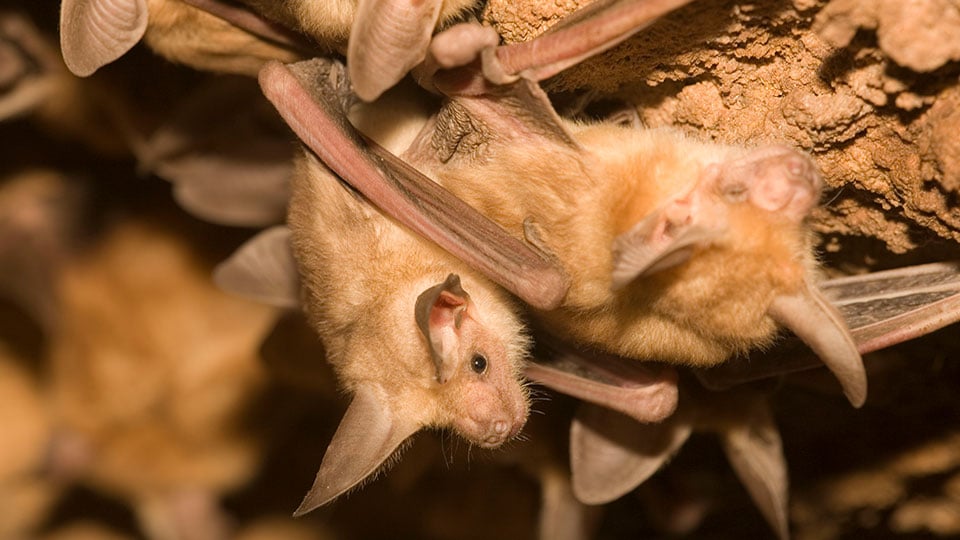Bats are fascinating animals that have long carried a negative reputation. These mysterious flying mammals are often the symbol of spooky season, but are often the subject of superstitions, folklore, and fear. They have also been touted as pests or unclean. In reality, there is little to fear about these animals. They are shy, intelligent creatures that play a vital and underappreciated role in our ecosystem and economy. Keep reading to learn more.
Bats are incredibly diverse. The smallest species is the size of a moth or bee and the largest ones have up to a five-foot wingspan. One quarter of the world’s mammal species are bats. About half of all bat species in North America can be found in California, with 16 species found here in the San Francisco Bay Area. The ones most common in Santa Clara County are the pallid bat, the Yuma bat, the Mexican free-tailed bat, the red bat, the hoary bat, the big brown bat, the silver haired bat, and the canyon bat.

Bats are important pollinators, helping improve the health of forests and agriculture by spreading seeds. Many food products are pollinated by bats – bananas, mangoes, dates, peaches, cocoa, and more. Many native plants are pollinated by bats, too, including evening primrose (Oenothera elata and Oenothera elata ssp. hookeri), honeysuckle (Lonicera hispidula) and goldenrod (Solidago velutina). And for those who drink tequila - agave plants are pollinated by bats. So if you like margaritas - you should thank bats! Bats also provide pest control management for U.S. agriculture by eating insects such as moths, flies, wasps, and mosquitoes. Some bats eat their body weight in insects every single night.
It’s no surprise that generations past thought these animals were magical – humans couldn’t figure out how they could find their way in the dark. Their use of echolocation (bouncing sounds of objects to navigate) certainly seemed to be a superpower, but they also navigate using their strong senses of hearing, smell, and even sight - that phrase “blind as a bat” is not true, bats have very good vision. Their seemingly erratic flight movement is actually quite skillful and carefully controlled.
In fact, using echolocation, bats can detect lines as thin as fishing line and fly between lines of them that are only a 3-4 inches apart. Interestingly, they are the only flying mammal and they can master “power flight,” meaning they can take off from the ground and gain elevation through their own power of flight.
Bats face many challenges, hence why these important creatures are on the decline. Habitat loss is a serious concern, and as forests are destroyed and caves and caverns closed off, bats lose their hunting and torpor (a shorter, frequent and involuntary version of hibernation) zones. Shifting weather patterns, exacerbated by climate change, threaten bats when insects don't hatch at the right time of year. White-nose syndrome, a fungal disease that originated in Europe, has killed more than 6 million bats in the US and Canada since 2006.
Conservation agencies like the Open Space Authority are working to conserve and manage habitat for wildlife, including bats, and creating educational events where people can learn more about these often-misunderstood mammals.
If you ever come across a bat, keep your distance and do not disturb it for your safety and the safety of the bat. This is especially important during winter when they are in a state of torpor. They need to conserve their energy in order to be able to survive until their breeding season in the spring and coming out of torpor requires a potentially life-threatening amount of energy.
Bats need your help! You can protect these creatures by calling a wildlife expert, like Wildlife Education and Rehabilitation Center if you ever find bats in an unexpected place. And during the winter, consider sealing your vents and attic spaces with mesh or steel wool, to prevent bats and other critters from seeking refuge in your house during the cold months.

